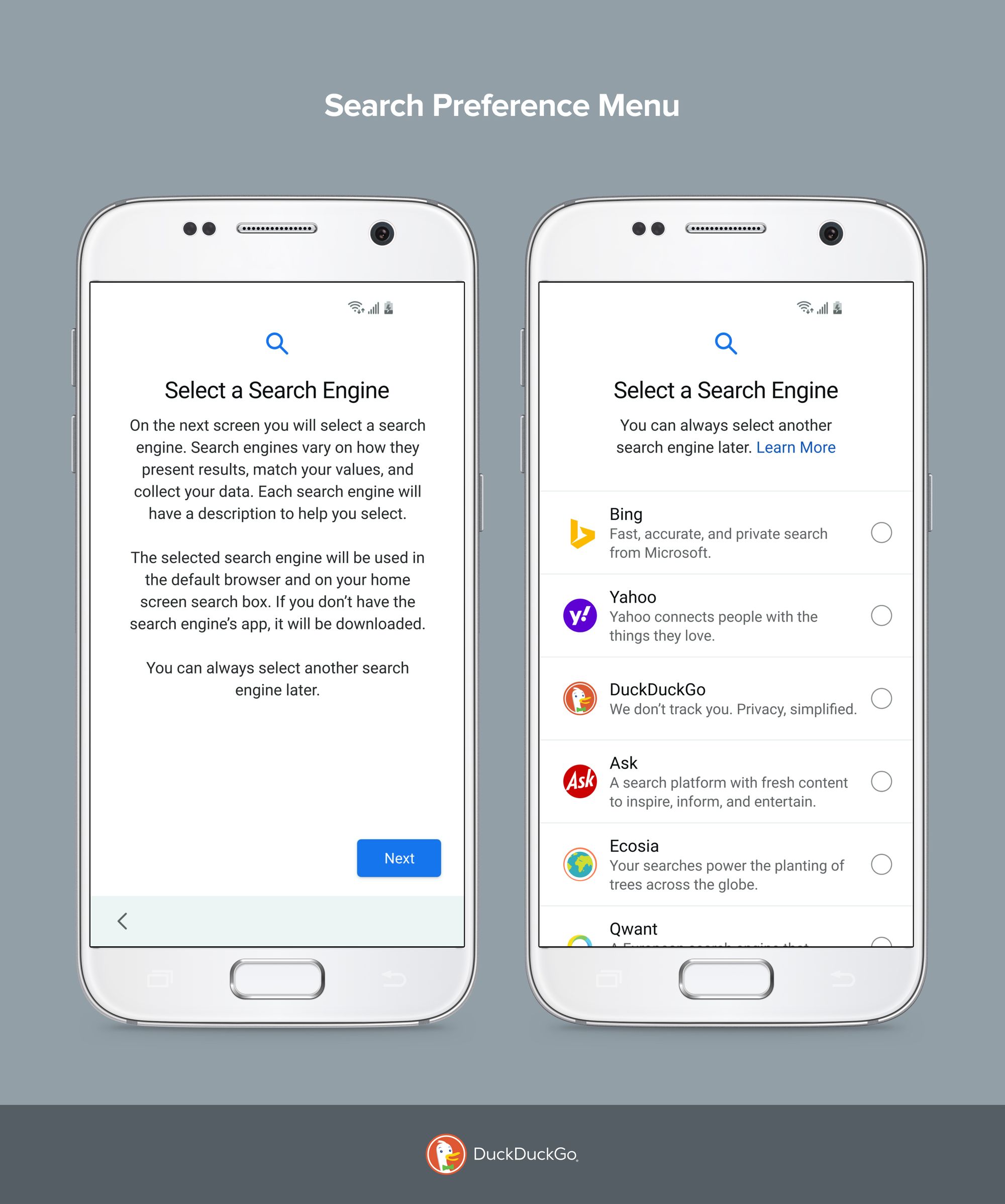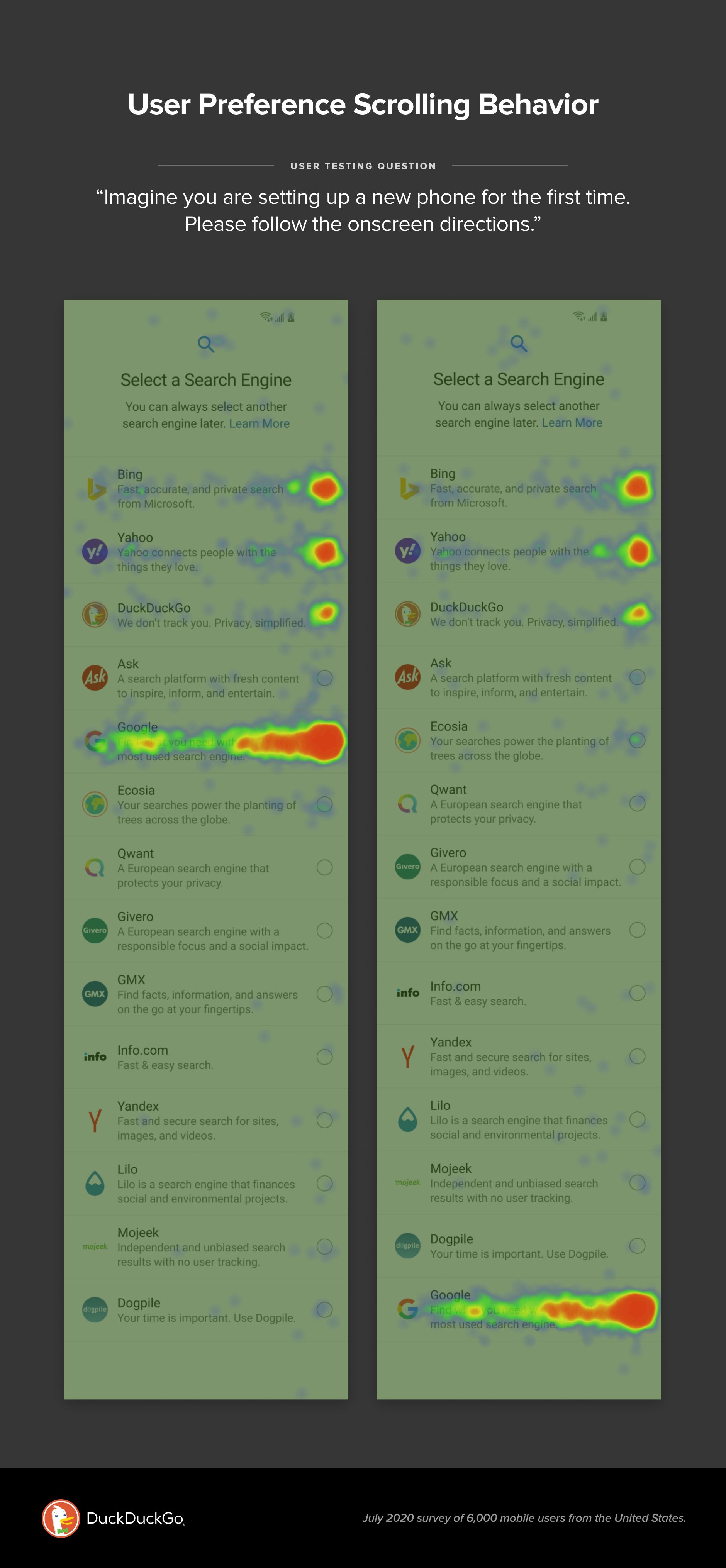Google Search Mobile Market Share Likely to Drop Around 20% through Search Preference Menus
This is the fifth in our series of posts about search preference menus.
- Large-sample user testing shows that 24% of people in the U.S., 24% in the U.K., and 17% in Australia would choose a non-Google search engine when given the chance to select a preference on their mobile phones.
- Given Google's current market share in mobile search is 95% in the U.S., 98% in the U.K., and 98% in Australia, a preference menu could reduce Google's mobile market share by 20%, 22%, and 16%, respectively.
- This user testing also shows people will scroll to check out their options before making a search engine selection, meaning Google could be placed on the last screen of any search preference menu.
As explained in the first post of this series, we believe search preference menus — ones that change all search defaults and include the most common Google alternatives — can deliver meaningful search engine choice to consumers and significantly increase competition in the search market. In short, it's a great tool when designed right.
Today, as part of our ongoing discussions about search preference menus with the federal and state enforcers in the U.S., the U.K. competition authorities, and the Australian Competition and Consumer Commission (ACCC), we are releasing new research data regarding how effective a properly designed preference menu can be in increasing competition and empowering consumers. This new data is from live large-sample user testing conducted with 12,000 people across those three countries. Participants interacted with our proposed design (depicted below) on their mobile phones.

In the first test, 3,000 people in each country interacted with the menu, for a total of 9,000 overall. The results show that if a properly designed search preference menu is pushed to all smartphone users, Google's mobile market share is likely to immediately drop by 20%, 22%, and 16% in the U.S., U.K., and Australia, respectively. And, this could just be the start. Because people would finally be able to easily change their search defaults, and as people become familiar with search engine alternatives, we expect even greater market share changes as time goes on.
Change in Google Mobile Market Share
| Country | Google Mobile Market Share (Current) |
Google Mobile Market Share (W/ Preference Menu) |
Mobile Market Share Change (%, relative) |
Scrolled to See Options (%) |
|---|---|---|---|---|
| U.S. | 95.1% | 75.8% ±1.5 | -20% | 84.8% ±1.3 |
| U.K. | 98.0% | 76.1%% ±1.5 | -22% | 86.9% ±1.2 |
| Australia | 98.3% | 82.7% ±1.4 | -16% | 86.2% ±1.2 |
Of course, a change in Google mobile market share means a simultaneous change in non-Google mobile market share.
Change in Non-Google Mobile Market Share
| Country | Non-Google Mobile Market Share (Current) |
Non-Google Mobile Market Share (W/ Preference Menu) |
Mobile Market Share Change (%, relative) |
Scrolled to See Options (%) |
|---|---|---|---|---|
| U.S. | 4.9% | 24.2% ±1.5 | +494% | 84.8% ±1.3 |
| U.K. | 2.0% | 23.9% ±1.5 | +1195% | 86.9% ±1.2 |
| Australia | 1.7% | 17.3% ±1.4 | +1018% | 86.2% ±1.2 |
We tested the idea that user selection would change depending on which screen Google is on. Specifically, we also showed an additional 3,000 U.S. users a preference menu where Google was placed on the first screen. There was no statistically significant difference in how often users selected Google. This result agrees with our last round of user testing, reinforcing that Google can be placed on the last screen of any search preference menu, maximizing user interaction with search alternatives, and therefore raising the brand awareness of non-Google options in the process.

In our proposal, the alternative search engines with the most market share in a given market are shown on the first screen, randomly ordered. The remaining alternative search engines are available by scrolling, randomly ordered. Google is placed on the last screen.
Methodology
Results are based on live large-scale user testing of random samples of mobile device users sourced from Cint and conducted on UsabilityHub. Respondents were paid but did not know the testing was paid for by DuckDuckGo. All reported results above are statistically significant at a confidence level of 95%.
For more privacy advice follow us on Twitter, and stay protected and informed with our privacy newsletters.
